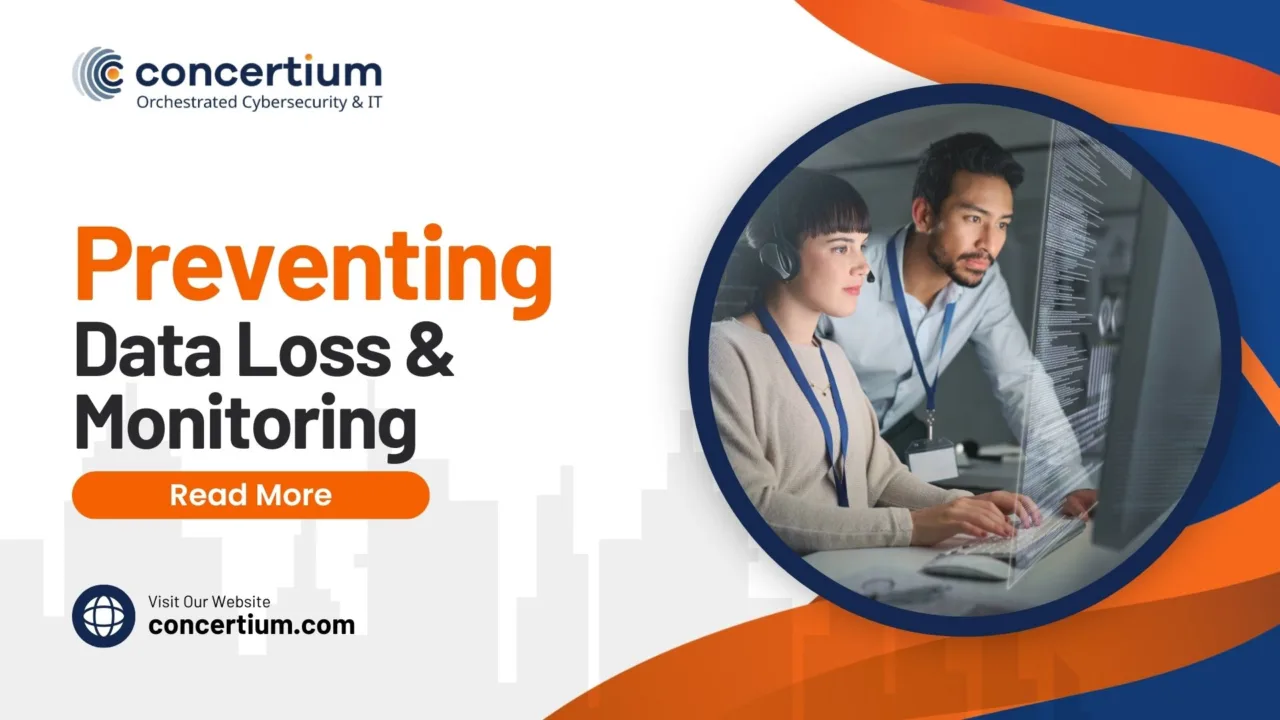Advanced Material Breach Monitoring
The proliferation of online activities has increased the risks of data breaches in 2023, making it essential for businesses to safeguard their information. One effective way to do this is through material breach monitoring.
Material breach monitoring involves tracking and identifying significant violations of data security policies. These breaches could lead to substantial financial losses and reputational damage if not detected and mitigated promptly. Understanding how this monitoring works and why it’s important can help organizations protect their assets effectively.
This article delves into the intricacies of material breach monitoring. We will explore its definition, the key components of a monitoring system, and its significance for businesses. Additionally, we will discuss how these systems operate, the tools and technologies involved, and how to integrate them with existing infrastructure. By the end, you’ll have a comprehensive understanding of how to prevent data loss through advanced material breach monitoring techniques.
Understanding Material Breach Monitoring
Definition and Overview
Material breach monitoring is a process used to detect and manage substantial breaches of data security protocols. These breaches can include unauthorized access to sensitive information, data leaks, or violations of compliance regulations.
The key components of a material breach monitoring system include:
- Detection Mechanisms: Tools and technologies that identify breaches in real-time.
- Alert Systems: Notifications that inform stakeholders about potential breaches.
- Response Protocols: Predefined actions taken to mitigate the impact of a breach.
By using these components, businesses can promptly identify and address significant breaches, ensuring their data remains secure. For instance, the NIST Cybersecurity Framework provides guidelines on how to structure these systems effectively.
Importance of Material Breach Monitoring
Material breach monitoring is crucial for businesses for several reasons. Firstly, it helps in maintaining compliance with regulatory standards. Many industries have strict data protection laws, and failing to comply can result in hefty fines and legal issues.
Secondly, without a monitoring system, the potential consequences of a breach can be devastating. These can range from financial losses due to fines and remediation costs to reputational damage that can lead to a loss of customer trust. Above all, a proactive approach to breach monitoring can significantly mitigate these risks.
By implementing a robust monitoring system, businesses can ensure that any breaches are detected and addressed quickly, minimizing the potential damage.
How Material Breach Monitoring Contract Works
Detection Mechanisms
Detection mechanisms are at the heart of material breach monitoring. These mechanisms identify various types of breaches, such as unauthorized data access, abnormal data transfers, and violations of security protocols.
Detection algorithms analyze data patterns to spot anomalies. For instance, if an employee accesses a large volume of sensitive information outside of normal working hours, the system flags this activity as suspicious. Therefore, continuous monitoring and analysis are essential for early detection.
Monitoring Tools and Technologies
Various tools and technologies are used in breach monitoring, including intrusion detection systems (IDS), firewalls, and data loss prevention (DLP) software. These tools work together to provide a comprehensive security solution.
The role of artificial intelligence (AI) and machine learning (ML) is becoming increasingly significant. These technologies can identify patterns and predict potential breaches more accurately than traditional methods. In other words, AI and ML enhance the efficiency and effectiveness of breach monitoring.
Integration with Existing Systems
Integrating material breach monitoring with existing IT infrastructure ensures seamless protection and remedy. This process involves configuring the monitoring tools to work alongside current security measures, such as antivirus software and network security protocols.
By integrating these systems, businesses can create a unified approach to data security, ensuring comprehensive coverage against potential breaches.
Implementing Material Breach Monitoring in Your Organization
Assessing Your Needs
Before implementing a material breach monitoring system, it’s crucial to assess the size and scope of your data. Start by evaluating the volume of data your organization handles daily. Larger organizations with extensive data networks require more robust monitoring systems. For instance, a financial services company managing vast amounts of sensitive client information will need a more comprehensive solution compared to a small retail business.
Next, determine the level of monitoring required. Consider the types of data breaches that could impact your organization. Is it at risk of phishing attacks, insider threats, or ransomware? Understanding the specific risks helps in tailoring the monitoring system to your needs. Additionally, assess your current cybersecurity infrastructure to identify gaps that a new monitoring system should fill. This ensures that the chosen solution complements and enhances your existing defenses.
For example, if your organization frequently deals with contractual obligations and is prone to breaches of contract, you’ll need a system that can detect anomalies related to these activities.
Choosing the Right Solutions
Selecting the appropriate material breach monitoring system involves several criteria. First, consider the system’s ability to detect a wide range of breaches, from minor breach to fundamental breaches. Look for solutions that offer comprehensive coverage, including the detection of anticipatory breaches and actual breaches.
Comparing popular solutions in the market can be overwhelming. Focus on those that provide real-time alerts and integrate with your existing IT infrastructure. For instance, contract management software with built-in breach monitoring features can be advantageous for organizations heavily reliant on contracts.
Another key criterion is the system’s ability to leverage artificial intelligence for detecting anomalies. AI can significantly enhance the accuracy of breach detection, reducing false positives and ensuring actionable alerts. Finally, consider the cost and whether the investment aligns with your organization’s budget and expected benefits.
Deployment and Configuration
Deploying a material breach monitoring system involves several steps. Start by planning the deployment process meticulously. Identify the critical areas where the system should be implemented first. Typically, these include databases with sensitive information and networks with high traffic.
Once you have a deployment plan, install the monitoring tools and integrate them with your existing cybersecurity infrastructure. Configuration is a crucial step. Set up the system to monitor the specific types of breaches relevant to your organization. For example, if you are in the financial sector, configure the system to detect breaches related to financial transactions.
Ensure that the system is calibrated to your organization’s unique environment. This includes setting thresholds for alerts and defining response protocols. Regularly test the system to ensure it is functioning as expected and making necessary adjustments. The goal is to achieve optimal performance with minimal disruptions to your operations.
Finally, document the deployment and configuration process. This documentation will be invaluable for future maintenance and troubleshooting.
Best Practices for Effective Material Breach Monitoring
Regular Updates and Maintenance
Keeping your material breach monitoring system updated is vital for its effectiveness. Regular updates ensure that the system can detect new and evolving threats. Schedule routine maintenance tasks to check the health of your monitoring tools.
Updating the system includes installing patches and software updates from the vendor. These updates often include enhancements to detection algorithms and new features that improve security. Regularly review the system’s performance and make adjustments as necessary to address any issues.
In addition, conduct periodic audits to ensure that the monitoring system complies with the latest cybersecurity standards and regulations. For instance, compliance with regulations like GDPR or HIPAA may require specific monitoring capabilities. Keeping the system aligned with these standards minimizes legal and financial risks.
Training and Awareness
Educating staff about material breach monitoring is crucial for the system’s success. Employees are often the first line of defense against data breaches. Conduct regular training programs to raise awareness about the importance of breach monitoring and how it works.
Training should cover how to recognize potential breaches and the correct procedures to follow if they suspect a breach. For example, employees should know how to report suspicious activities and understand the types of breaches that could occur. Regular refreshers ensure that the knowledge stays current and relevant.
Additionally, foster a culture of security awareness. Encourage employees to stay vigilant and proactive in identifying potential threats. Engaged and informed employees can significantly reduce the risk of data breaches and enhance the overall effectiveness of your monitoring system.
What People May Also Ask
What is material breach monitoring?
Material breach monitoring involves tracking and identifying significant violations of data security policies to prevent data loss and protect sensitive information.
Why is material breach monitoring important?
It’s crucial because it helps prevent significant financial losses, reputational harm, and legal consequences by detecting and addressing breaches promptly.
How do I choose the right breach monitoring system?
Evaluate your needs, compare popular solutions, and select a system that offers comprehensive coverage, real-time alerts, and integrates with your existing infrastructure. Look for features like AI-powered detection.
What are the common challenges in implementing breach monitoring?
Challenges include integrating with existing systems, maintaining regular updates, and ensuring staff are adequately trained and aware of breach monitoring protocols.
Conclusion
In summary, material breach monitoring is essential for protecting your organization from data breaches. By understanding its importance, implementing the right solutions, and following best practices, you can significantly reduce the risk of breaches.
Regular updates, staff training, and a robust monitoring system will safeguard your data and mitigate potential financial and reputational damages. Remember, proactive monitoring is the key to maintaining data security in today’s digital landscape.
Secure your organization’s data with Concertium’s advanced material breach monitoring services. Schedule a demo today to see how our comprehensive solutions can protect you from significant financial losses and reputational harm. Don’t wait—proactively safeguard your data now!





